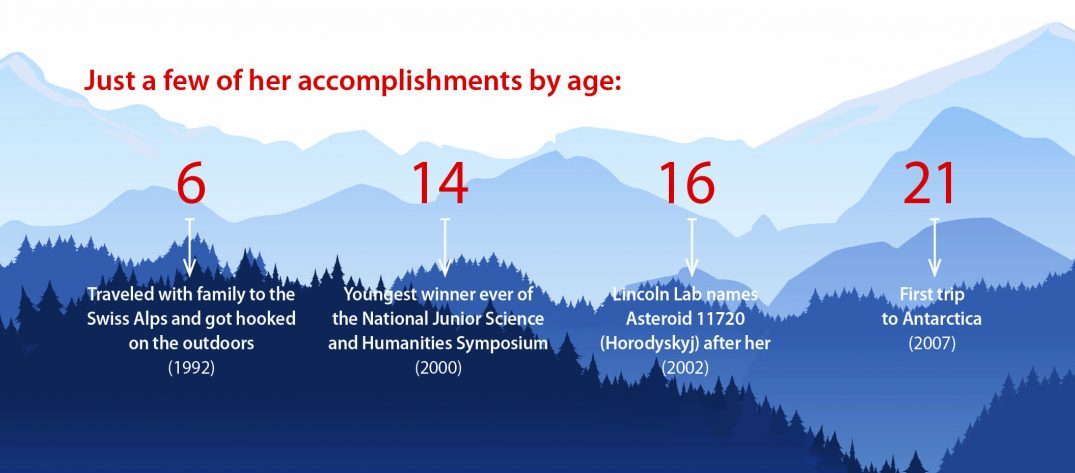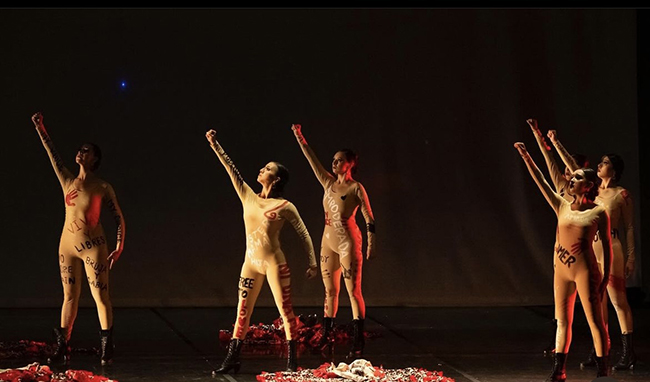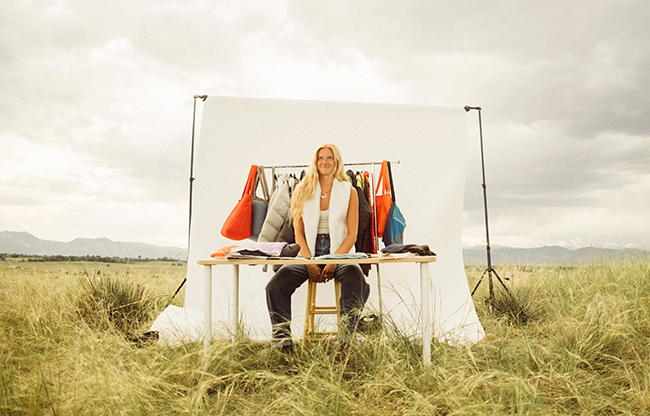Passion for Wild Places: Ulyana N. Horodyskyj
20 Oct 2020
Horodyskyj crafted a life of exploration and adventure.
By Jeff Blumenfeld
In choppy seas off the coast of Antarctica, 34-year-old Ulyana N. Horodyskyj, Ph.D., field researcher and adventurer, guides her inflatable Zodiac boat filled with cruise ship passengers. Navigating the rough surf to return the passengers to their expedition ship safely is the goal. It’s a final exam of sorts for her certification as a polar guide with the Polar Tourism Guides Association.
This is the Boulder resident’s second working trip to Antarctica and the latest in a series of adventures for a scientist who, by the tender age of 23, had researched on all seven continents. Men’s Journal magazine named Horodyskyj (pronounced horo-DIS-kee) one of the world’s most adventurous women in 2019—one who is redefining the limits of what’s humanly possible.
The journey of a landlocked Coloradan to Antarctica begins with an upbringing in an outdoorsy family in Rochester, New York. Horodyskyj competed in high school science fairs, eventually earning a master’s degree in planetary geology from Brown University, and a Ph.D. in geological sciences from the University of Colorado Boulder.
Her resume sits squarely at the intersection of adventure travel, citizen science and exploration. Horodyskyj has tested spacesuits in a Falcon 20 “vomit comet” and was once Maytagged in a human centrifuge at the National Aerospace Training and Research Center.


To study climate change, Horodyskyj traveled to the icefields of Mount Everest, the fjords of Baffin Island in Canada, the Svalbard archipelago near Norway and the glaciers atop Mount Kilimanjaro—all wild and remote terrain where the effects of a changing planet are often most easily observed.
In 2016, she spent 30 days locked inside a three-story, 636-square-foot habitat as part of the Human Exploration Research Analog program at the Johnson Space Center in Houston. She commanded a NASA-monitored team of two men and one other woman studying the effects of long-duration spaceflight on the human body.
Today, as a member of the Fjällräven Local Guides program and a fellow of The Explorers Club, she’s passionate about teaching environmental science at Colorado College in Colorado Springs. In addition, she’s running Science in the Wild, which she founded in 2016 to host citizen-scientists on immersive international expeditions to the Himalayas, South America and the Arctic.
“These are not tourist trips,” she says. “There’s hard work to be conducted alongside researchers who will publish the work. It’s my passion to make science accessible, fun and interesting so people will commit to joining us.”
Horodyskyj is married to professional musician and expedition guide Ricardo Peña, whom she accompanied this past July as he completed No. 50 in his quest to summit the tallest peak in each state. The grueling 60-mile round-trip hike to Wyoming’s Gannett Peak (13,810 ft.) while saddled with a 42-pound backpack was Horodyskyj’s 28th U.S. state highpoint.
“I was drawn to geology and natural sciences—it was a career path that allowed me to pursue my passion for wild places, which was imprinted upon me at an early age,” she said while taking a break from her latest project: analyzing and interpreting climate data for the University of Alaska Fairbanks’ Alaska Climate Research Center.
“Science provides answers and solutions to problems facing our planet,” she says. “Science not only brings us modern conveniences such as air flight and smartphones and GPS, but it’s our best chance to cure the most serious health issues facing the world today.
Learn more about Science in the Wild at scienceinthewild.com.












